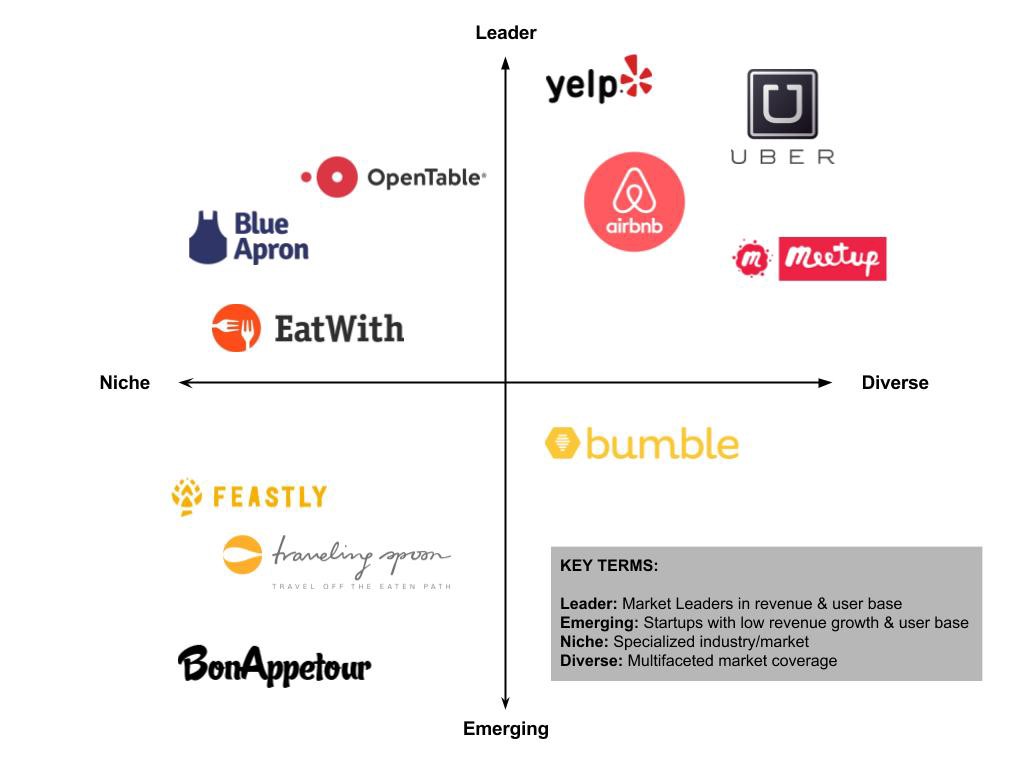Case Study
Dinner Party Planning & Network Platform for Social Eaters
Client
Airbnb
Timeline
2 weeks
Role
UX Researcher/Designer
Interviewer
Market Analyst
Tools
Illustrator / Photoshop
Sketch + Craft
inVision
Trello
RealTimeBoard
Project Brief
In this exploratory project, my team and I were challenged with proposing a market opportunity for an existing brand and shipping a design that addresses a problem we identified through research of their users and competitive analysis.
A scrum team of UX designers was assembled to research in order to identify a potential market opportunity for Airbnb. We identified a niche market of supper clubs and dinner parties currently underserved by emerging market players.
The Problem
Social eaters have expressed interest in home cooked dining experiences. Many Hosts and Guests alike are unaware of existing niche services in connecting them, due to lack of market reach. In addition, Hosts currently have to deal with inefficient methods of planning.
How can we build a more robust and scalable service utilizing Airbnb’s extensive user base for our Dinner Party Host to engage Dinner Guests in home cooked dining experiences?
Opportunity
Airbnb has an existing trust network that cooks could tap into to find dining guests for their meals. Their target audience of people searching for authentic experiences serves the user targeted by the problem statement. Additionally their existing payment, messaging, home booking and ratings platform could be utilized to facilitate in home dining events.
Deliverables
Project Proposal | Initial Problem Statement, Target Audience, Business Background, Goals, Competitors, Potential KPIs, Opportunity
Specification Documentation | Research Insights, Task Flow, User Flows, User Journey, Design Strategy, Feature Prioritization, Annotated Wireframes, Usability Testing, Iterations, Invision Prototype, Next Steps
Stakeholder Presentation | Market Overview, Problem Statement, User Personas & Journey, Research Insights, Opportunities, Design Strategy, Usability Test Insights & Metrics, Prototype Demo, Next Steps
Discovery Methods
Screener Survey | 19
User Interviews | 5
Competitor Analysis
Personas | 2
User Journey/Flow
Feature Prioritization
Mid/Hi-Fidelity Wireframes
Paper Prototype
Interactive Prototype
Usability Tests | 12
Iterations | 3
The Solution
Based on our user research and competitive market opportunities, we focused our overall design strategy and feature prioritization in helping our Host engage Dinner Guests, in the following areas:
Event creation and management platform that integrates with Airbnb venue booking
First phase implementation on responsive web since majority of Hosts reported using desktop as main platform in planning
Expand Airbnb’s community base in offering Home cook and Chef services
Social media integration to extend event participants to wider social circles





















